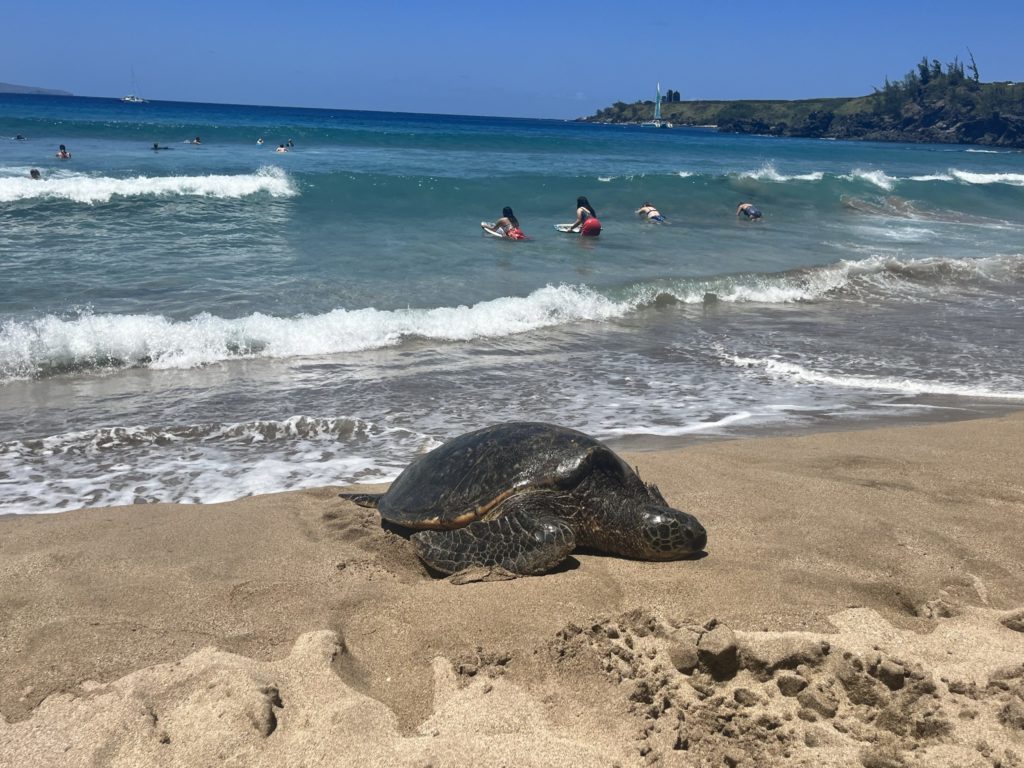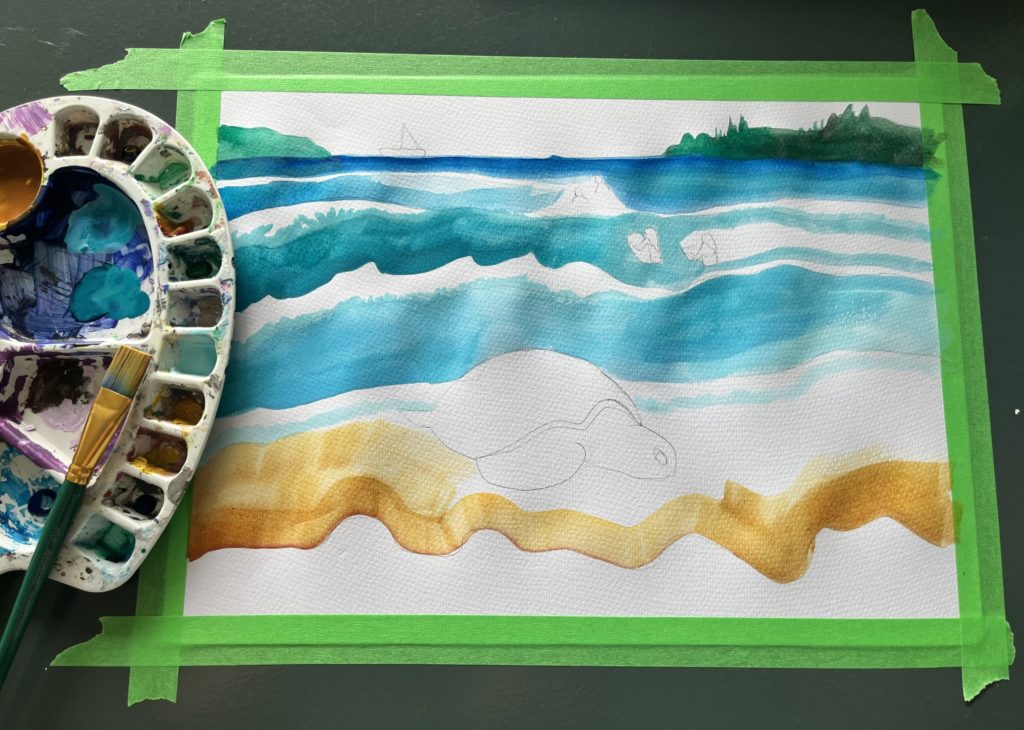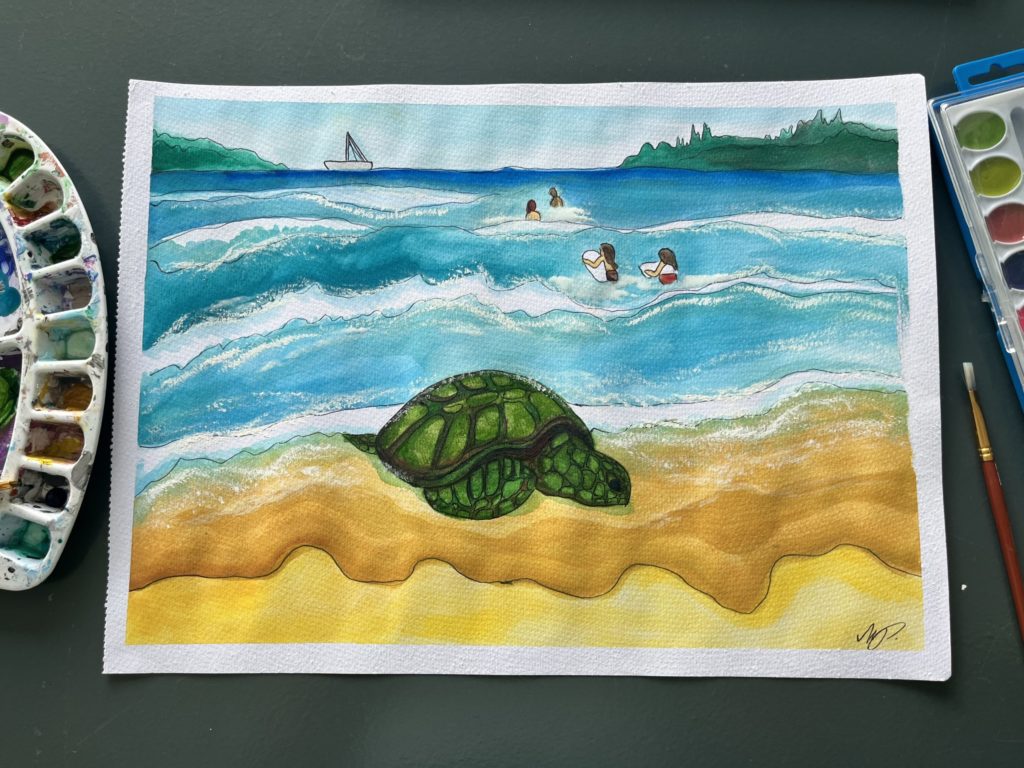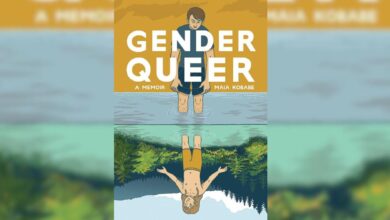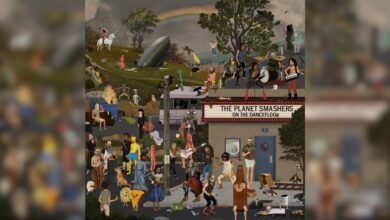Hobby Hole: Watercolour painting
Summer is a time to go with the flow, and watercolour painting is the perfect activity to creatively wash away stress and enjoy the moment.
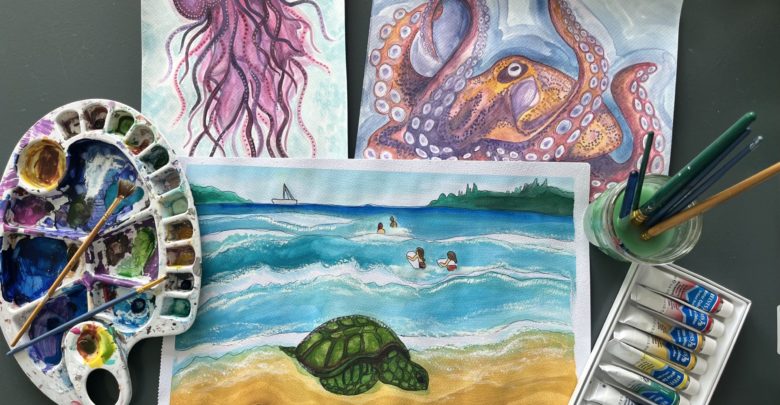 Megan Posyluzny
Megan PosyluznyPainting, especially watercolour, is a hobby that forces me to slow down and enjoy the process of creating something. After a busy semester finally ends and my mind still has a hard time slowing down, there’s nothing I enjoy more than to de-stress through art.
Ever since I was young, painting has always been a casual hobby of mine. I love the concept of transforming a blank canvas into something detailed, colourful, and creative.
There is a growing body of research supporting the mental health benefits of art-therapy. Engaging in art-making helps the artist enter a state of flow where their focus enhances in a meditative way. This state is associated with positive psychological benefits like increased happiness and creativity.
One of the great things about watercolour painting is that it teaches you patience. I’ve learned that watercolour can be unpredictable as the colours layer and spread across the canvas.
When I let go of expectations for a piece of art that I am making, it helps me forgo control of the artistic process and simply enjoy the creative journey. Ultimately, watercolour painting is so unpredictable that it forces you to let go of your own expectations, which can hold back your creativity.
Another great thing about painting is that it’s an artistic activity for any skill level, which makes it appealing for beginners to try!
Here are five steps that I follow to create and relax through watercolour painting.
Step 1: Find inspiration
Perhaps the most exciting part of the creative process is finding inspiration. I usually use a photo of nature that I’ve taken myself, or one that I really like from Pinterest, as a reference for my paintings.
It’s important to remember that although mastering watercolour takes practice, that shouldn’t stop you from attempting to paint whatever you want – no matter how challenging it may seem.
Step 2: Gather supplies and start painting
Of course, watercolor painting requires a canvas (or paper), brushes, water, and paint. I would recommend a watercolour paper book with acid-free paper, a variety of brushes, and pigmented watercolours to get started. For this piece, I used Mont Marte paper with Reeves fine water colours. For a beginner, as long as you have a variety of brush shapes, then off-brand bushes are completely fine. Most importantly, make sure to tape the paper’s edges to a solid surface. This prevents your canvas from moving too much while you work.
Step 3: Layer colours
After lightly sketching any major outlines from my reference photo, I begin with painting the background colours. In this photo, the blue of the ocean and the yellow of the beach were the first colours on my canvas.
The key to watercolour is that the more water you add to a pigment, the more diluted — or less colourful — it will be on the canvas.
I would recommend building your colours slowly. This allows you to create different ranges of colours. At this stage, you learn how to be patient with your progress and to trust the water to help you create a unique piece.
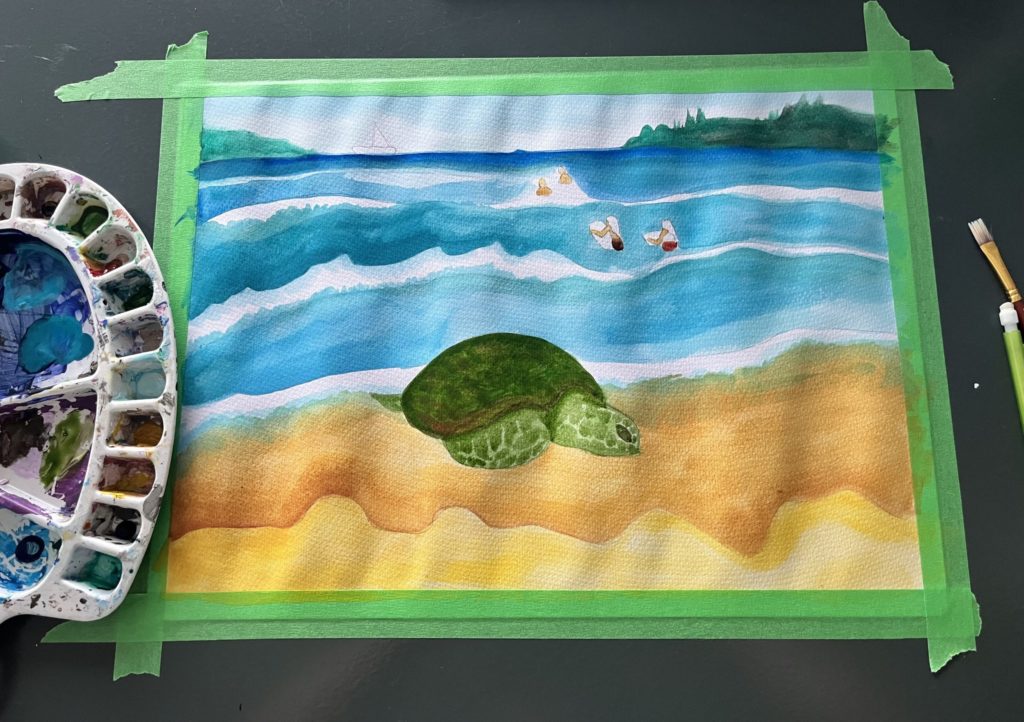
Step 4: Add personal touches
I am not a traditionalist when it comes to watercolor painting techniques. For this piece, I chose to outline figures, such as the seaturtle, with a black ball-point pen. I also created wave foam by dabbing white watercolour pigment on a fan-brush.
Adding your own touches allows you to fully enjoy and be proud of what you have created because it is unique to you. Don’t be afraid to stray away from the norm.
Step 5: Dry and display!
Finally, after you have let your piece fully dry, make sure to display it in a place where you can enjoy what you have created! Looking at your artwork everyday is almost as satisfying and enjoyable as creating the piece itself.

